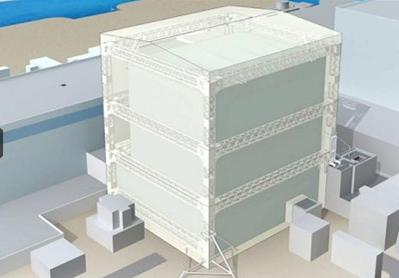Thirty-seven clean energy groups submitted a formal petition for rulemaking to the federal Nuclear Regulatory Commission seeking adoption of new regulations to expand emergency evacuation zones and improve emergency response planning around U.S. nuclear reactors. If you would like to sign on as a co-petitioner, click here.
Calling on the NRC to incorporate the real-world lessons of the Fukushima nuclear disaster, the proposed rules would expand existing emergency evacuation zones from 10 to 25 miles around nuclear reactors and establish a new zone from 25-50 miles around reactors for which utilities would have to identify and publicize potential evacuation routes. Another improvement would require utilities and state and local governments to practice emergency drills that includes a natural disaster that either initiates or occurs concurrently to a nuclear meltdown. Currently, utilities do not have to show the capability to conduct an evacuation during a natural disaster—even though, as seen at Fukushima, natural disasters can cause nuclear meltdowns. The petition would also expand the “ingestion pathway zone,” which monitors food, milk and water, from 50 miles to 100 miles around reactors.
Click here to find out how close you live to a nuclear power plant in the United States.
“80% of the airborne radiation released from Fukushima went directly over the Pacific Ocean,” explained Michael Mariotte, executive director of Nuclear Information and Resource Service, which initiated the petition. “Even so, the Fukushima evacuation zone extended more than 25 miles to the northwest of the site, and the NRC and U.S. State Department both recommended that U.S. citizens within 50 miles of Fukushima evacuate. Such evacuations could not be effectively conducted in the U.S. under current emergency planning regulations. We need to be better prepared and we can’t rely on favorable wind patterns to protect the American people.”
The NRC has relied primarily on the 1979 Three Mile Island accident and subsequent computerized accident simulations to support its emergency planning rules. But first at Chernobyl in 1986, and now at Fukushima, the real world has trumped any possible simulation. The fact is that far too many Americans live near nuclear reactors, but outside existing emergency planning zones. Based on real-life experience, these people need better protection.
“There is no invisible lead curtain surrounding nuclear power plants. We need to incorporate lessons learned from previous nuclear disasters. At the very least, we should stop pretending that emergency evacuation zones of 10 miles are adequate, and expand planning to include residents living within 50 miles of a nuclear power plant,” said Eric Epstein of Three Mile Island Alert in Pennsylvania. “On Friday, March 30, 1979–while school was in session–Governor Thornburgh recommended a ‘precautionary evacuation’ for preschool children and pregnant women living within five miles of Three Mile Island. The targeted population was estimated at 5,000, but more than 144,000 central Pennsylvanians from 50 miles away fled the area–further proof that a radiological disaster is not a controlled field trip.”
Indian Point, 24 miles from New York City, sits at the epicenter of the most demographically dense area of any nuclear reactor in the nation. Even under normal conditions, traffic is congested and regional infrastructure is highly stressed. During the severe snow, rain and wind storms of the past few years, large swaths of the region have been brought to a near standstill. And yet the NRC ignores all these realities, preferring to play with its computer models. This is a dangerous game.
In light of the recent activities around nuclear plants both in the United States and in Japan it had become obvious that new Emergency Planning Zones need to be implemented. Japan is still experiencing unfolding occurrences that are taking place outside of their projected protected zone. The United States must move to protect her citizens who are in these dangerous pathways.
A third of the population in the U.S., or roughly 120 million people, lives within a 50 mile radius of a nuclear reactor. Current emergency planning rules require utilities to develop and exercise emergency evacuation plans within a 10 mile radius around reactors. The “ingestion pathway” currently consists of an area about 50 miles in radius and focuses on actions appropriate to protect the food ingestion pathway.
At Fukushima, and earlier at Chernobyl, interdiction of contaminated food and liquids has occurred further than 100 miles from the accident sites.
Japan is already acting to improve its emergency response capability, in the event nuclear reactors ever are allowed to operate there again. Prior to the disaster at Fukushima, the emergency planning zones for nuclear emergencies in Japan was between 8-10 kilometers (5-6 miles). The zone is now being expanded to 30 kilometers (18 miles). The actual Fukushima evacuation zone was a 20 kilometer (12 mile) radius around the site, although areas to the northwest had the heaviest radiation measurments on land.
The full text of the petition is available here: http://www.nirs.org/reactorwatch/emergency/petitionforrulemaking22012.pdf
Read Full Post »



